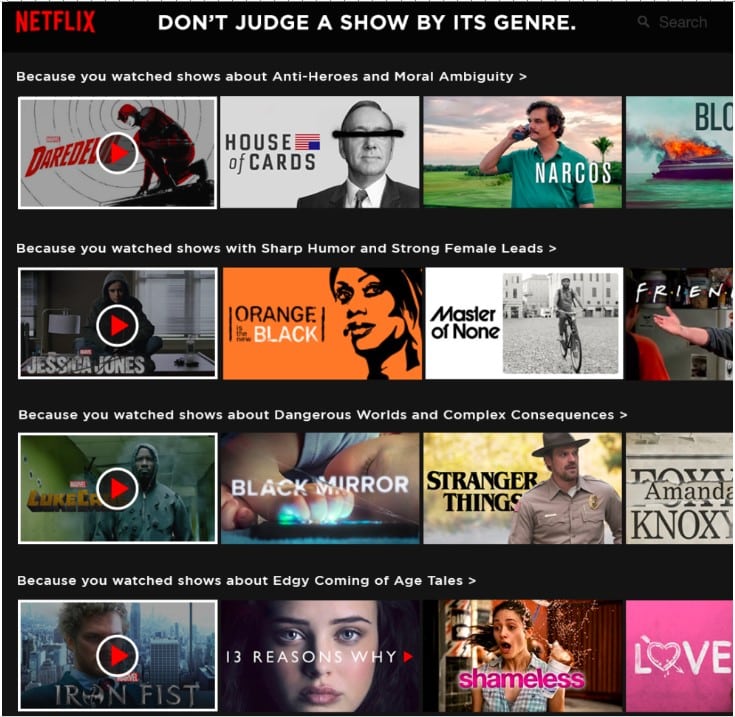When coming across a brand online, it’s no secret that the smallest moments have the greatest impact. While many online brands spend months confidently crafting a consumer journey map from first impression to the checkout, it’s often the case that a simple PR pop-up or TikTok swipe-up link sends a shopper straight to the purchasing stage in one micro-moment.
With smartphone-powered PR on the rise, micro-moment shopping is becoming more popular than ever before. As online retailers compete for conversions, introducing quick-conversion opportunities to your campaign strategy could be the key to targeting today’s impatient smartphone shoppers.
If you’re struggling with your own smartphone-powered PR strategy, we’ve got you covered. Stick with us as we teach you how to build your own quick-conversion moments for a traffic boost worth working for.
Prioritize high-quality visuals
In an era of smartphone shopping, we are beginning to see brands find new ways to visually present their products in innovative and exciting ways. From 360-degree views to AR-powered 3D images, the sky has become the limit for many brand giants.
While PR professionals are known to focus their visual efforts on social campaigning, your online store is the place to start, if you want to keep the conversions rolling in.
“We are experiencing an era of high-paced content consumption. Visual content is really what grabs the most attention and delivers the best results,” says Alina Virstiuk, Content Manager at Gepard. “Consumers today don’t go window shopping at their local mall. They browse the web instead. A great product presentation online for customers to view is a good picture or video that is properly advertised.”
The key here is to use high-resolution images, interactive elements and enticing videos to push your products out from the crowd. It can be hard to make a PR campaign shine on a densely dominated Google search and even harder to be noticed on a TikTok FYP or Instagram Explore page. Therefore, if brands want to grab consumer attention quickly for a speed shopping experience, prioritizing the value of visuals is essential.
One brand doing this well is Nike. Not only does their online store offer a seamless user journey from impression to checkout, but each product is displayed in a number of different angles, zoom levels and lighting.
These images paint a creative picture to the consumer in the same way as a traditional PR campaign, however, rather than being presented on social media, they sit proud at the front of the online store.

(Image Source: Nike)
Better still, Nike even offers a 360-degree product viewing experience so that smartphone customers can get the full high-street experience in seconds.
Streamline your user’s journey
Micro-moment campaigning is all about finding a quick path from the first impression to the checkout. For some, this could mean removing the online searching/browsing stage and following a direct link to the product of your choice. For others, this could mean prioritizing high uptime, loading speed and 24/7 consumer support during their online store creation.
In order to optimize your online store for micro-moment targeting, you need to make sure you’re streamlining your consumer journey from all angles.
Did you know that you only have 8.25 seconds to capture the attention of the average consumer? In a smartphone-centered world, it’s imperative that you create a landing page that quickly displays valuable insights, offers and exclusive experiences that aim to keep a consumer’s attention for longer.
Better still, using the powers of predictive technology such as AI, online stores can now show each consumer personalized product recommendations as soon as they interact with their brand.
The key here is to cover your channels in easy-to-click call-to-actions that take each consumer to their destination seamlessly. Whether this is on your site landing page, within blog-post backlinking or social media swipe-ups, impatient shoppers are looking for the fastest way to the checkout.
Amazon is a great example of a brand that knows how to streamline its user journey. With its one-click ordering features and a checkout process that saves consumer details for fast purchase processing, this retail giant doesn’t give a customer much time to change their mind.

(Image Source: RevelX)
As you can see here, Amazon’s conversion funnel pulls out all the stocks when it comes to the interest stage, giving potential leads every avenue to convert. From online ad links to email redirects, each consumer has a number of ways to complete a micro-moment purchase.
Create a sense of urgency
If you want to engage in a micro-moment campaign experience, creating a sense of urgency is essential when it comes to your PR strategy.
If you want your consumers to convert quickly, give them a reason to. This can be in the form of compelling calls to action in your campaign text or even a quick note about your stock level below the product they are browsing.
Highlight the product’s exclusivity and popularity on your site as well as within press releases and social content. For example, if you’re selling foundation, let your consumers know that there are limited bottles left in their desired shade, or that this particular formulation is an exclusive seasonal offer. This creates a sense of urgency and could encourage a quicker conversion.
Take Booking.com, for instance. There are not many deals on this holiday booking site that are not supported by bold urgency statements such as ‘in high demand’ or ‘only one room left’. This drives a consumer to make a snap purchase decision.

(Image Source: Booking.com)
As you can see above, Booking.com also uses colors to highlight important messaging and calls to action. Red and orange create a sense of urgency while calming green highlighting ‘free cancellation’ gives the consumer reassurance that they can still change their mind at a later date.
Urgency feeds an increasingly fast-paced shopping environment, so it’s a great tactic to include when revamping your PR strategy.
Introduce smart recommendations
Last but not least, it’s time to utilize AI in your campaign strategy if you want to compete in a micro-moment shopping landscape.
With a whopping 71 percent of consumers now expecting their favorite brands to provide them with personalized experiences, AI-driven algorithms can help boost your success when it comes to customisable consumer journeys.
Using AI, brands can create personalized product recommendations that appear on social feeds, site landing pages and even within emails for a streamlined journey to the checkout. Not only are consumers more likely to click on personalized product recommendations, but they will become more loyal because of it.
Netflix is a great example of a brand that uses AI to enhance personalisation. This is in the form of personalized film/TV show recommendations.
“Whenever you access the Netflix service, our recommendations system strives to help you find a show or movie to enjoy with minimal effort. We estimate the likelihood that you will watch a particular title in our catalogue based on a number of factors,” say experts at Netflix.

(Image Source: Netflix)
“In addition to choosing which titles to include in the rows on your Netflix homepage, our system also ranks each title within the row, and then ranks the rows themselves, using algorithms and complex systems to provide a personalized experience.”
A micro-powered future
There is no doubt that we’re heading into a micro-moment-dominated future of PR and online shopping. As smartphone shopping becomes more popular amongst digital natives, it’s up to brands to change the way they target consumers.
Consumer journeys must be more streamlined, product content must shine, and personalization must be prioritized if brands want to see success moving forward.








